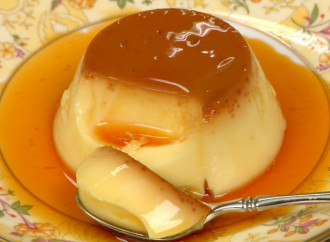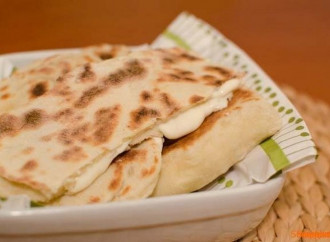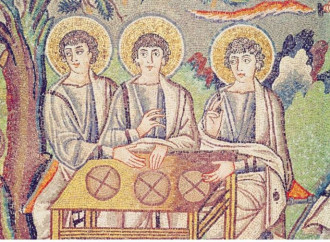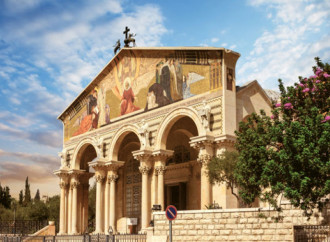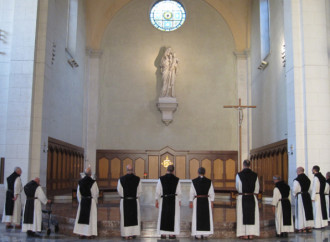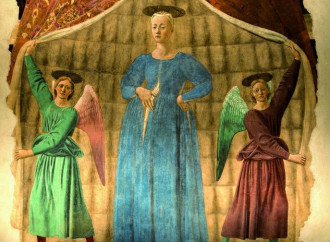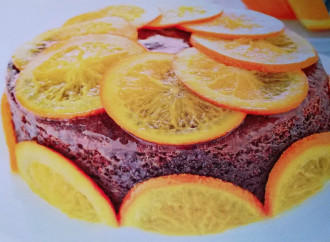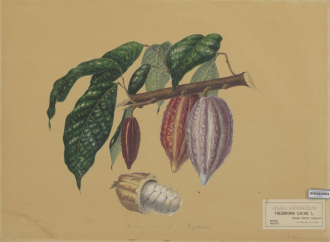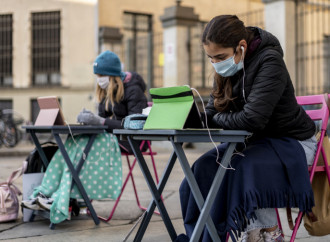Milk, mankind’s first nourishment
For every latitude and religion, mother's milk is an extension of the special relationship between the child and the mother. In the Holy Scriptures, milk is mentioned several times, as in the theophany at the Oaks of Mamre, where Abraham serves the Lord milk and meat together, implicitly giving an answer on the Jewish dispute between what is allowed (kosher) and forbidden (terefah) to eat. In reality, food prohibitions are primarily cultural.
- THE RECIPE: CRÈME CARAMEL
Bread, symbol of life
Today we begin a long journey into food in biblical times. Food in general and meals in particular play an important role in human history and thus in biblical history. We will start with bread, food par excellence: it is mentioned 361 times in the Bible, and Jesus himself self-identifies with bread.
- THE RECIPE: CHEESE-FILLED BREAD
Barluzzi, an architect-mystic. The Gaudí of the Holy Land
Antonio Barluzzi, who passed away sixty years ago today, was the mind and hand behind some of the most renowned churches constructed by the custodian Franciscans in the Holy Land. During the course of forty years lasting until 1958, his designs and plans became more than a dozen churches built in the Holy Sites, and these included the ones of the Transfiguration, the Flagellation, the Beatitudes, and the Basilica of All Nations.
Tour of chocolate-producing monasteries
In the 19th century, once the ecclesiastical diatribes on the legitimacy of drinking chocolate during the Lenten period had subsided, the monasteries began to produce it. Handcrafted and on a small scale, but of great quality. From the Abbey of Our Lady of the Blessed Sacrament, in Frattocchie, Lazio, to the Bridgettine monastery of Amity, Oregon, we discover some of the most sought-after products, the fruit of a world that combines work with prayer.
"Certain that it will arrive, we await the birth of light"
In Piero della Francesca's “Madonna del Parto” we find the meaning of Advent: Mary is certain of the baby she is expecting, the Son of God. There is no-one better than the Virgin Mary to personally accompany us in this period of waiting which focuses on the unique, indestructible -and also previously unavailable- link between life and death, between time and eternity.
The Church’s love-hate disputes over chocolate
Pius V’s terse judgement on the “drink of the gods”; the arguments on the prohibition or acceptance of this food during fasting; the idea that it is an all-Catholic food (coffee is supposed to be Protestant); the Jesuit missionaries’ taste for it; and the debate at the Council of Trent. Finally, the chocolate eggs and cribs of our days.
- THE RECIPE: CHOCOLATE AND CANDIED ORANGE CAKE
Chocolate, centuries of ups and downs
Pre-Columbian civilizations considered Theobroma cacao divine and used it to prepare a drink comparable to chocolate. The first European to mention the fact was the conquistador Cortés. For a period of time, certain churchmen remained wary of the food, both because of its aphrodisiac character and because of the exploitation of slaves for its production. Thanks to 19th century innovations, chocolate became the most widely consumed product we know.
- THE RECIPE: CHOCOLATE-DIPPED STRAWBERRIES
Here's the damage from online distance learning. And they call it "normal."
Studies from Gaslini Children’s Hospital in Genoa, Scotland, France, and the Italian Journal of Pediatrics conclude that young students and children are developing behavioral and regression problems during lockdowns and because of online distance learning. In addition, there is evidence of depression, stress, breathlessness , sleep deprivation, separation anxiety, and reduced interaction with parents. Parents are inclined to accept this "sacrifice" thinking it will soon pass. But it's shameful the mass media are relentlessly reporting this situation as the "new normal."


